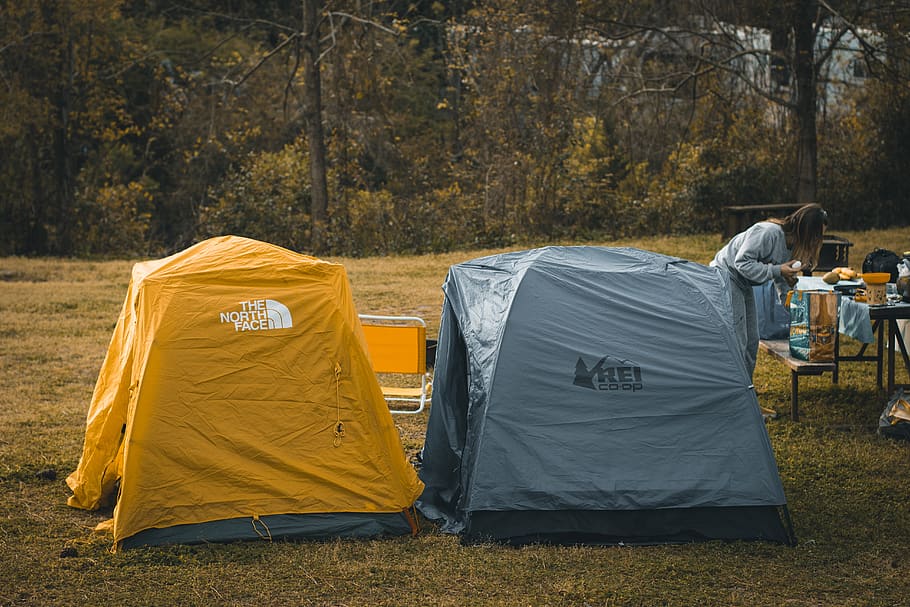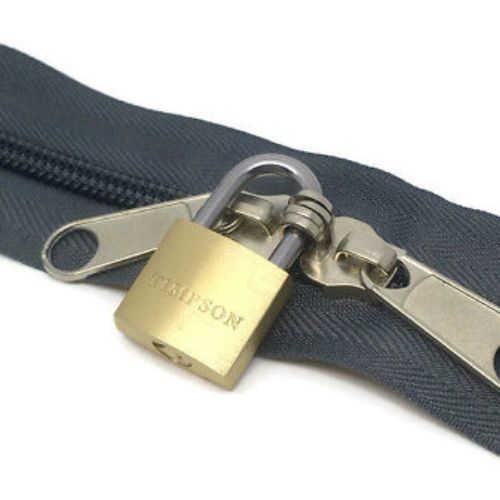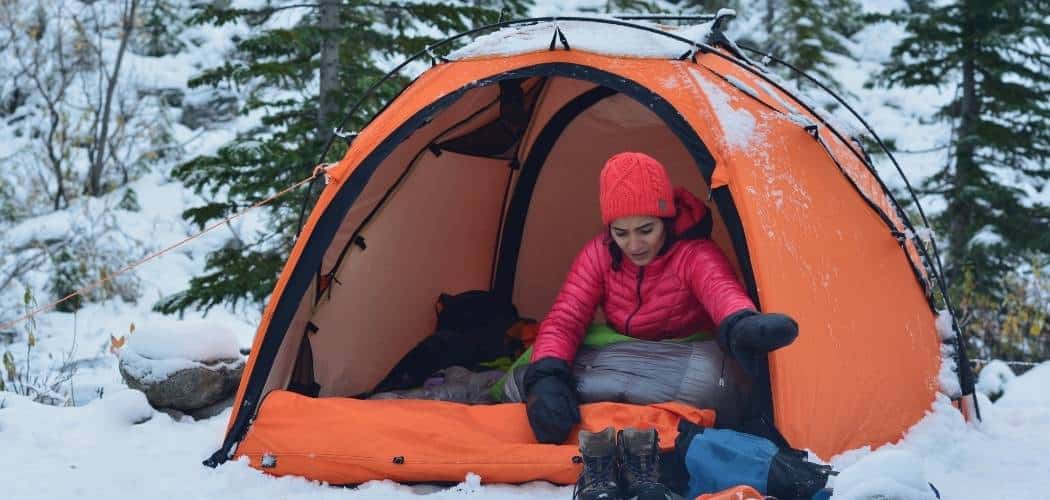The Importance of Securing Your Tent
When heading out for a camping trip, one of the most important things you should keep in mind is the safety of your belongings. Your tent is your home base, your place to sleep and rest after a long day out in the wilderness. It’s also where you keep all of your gear, from food to electronics to clothing.
The last thing you want is for someone to break in and steal your valuables or even worse, vandalize or damage your tent. Securing your tent not only protects your belongings but also gives you peace of mind knowing that you can relax and enjoy nature without worrying about theft or vandalism.
Additionally, properly locking up your tent can also prevent wild animals from getting inside and causing damage or stealing food. So if you want a stress-free camping experience, it’s essential to take the necessary steps to secure your tent.
A Brief Overview of the Guide
- discussing different types of locks available on the market
- tips on preparing and setting up your tent for maximum security
- step-by-step instructions on how to lock up your tent properly
- additional security measures
By following this guide’s comprehensive advice on securing tents while camping outdoors or exploring new places abroad, readers will be able to enjoy their adventures worry-free and with peace of mind.
Choosing the Right Lock
Different Types of Locks Available
When it comes to securing your tent, there are several types of locks to choose from. The most common types of locks include padlocks, combination locks, and cable locks. Padlocks are great for their durability and overall strength.

Combination locks, on the other hand, provide more flexibility since you don’t have to worry about losing keys. Cable locks are also a popular choice because they allow you to lock up multiple items at once.

Pros and Cons of Each Type
While each type of lock has its own benefits, they also have their drawbacks. Padlocks can be heavy and difficult to carry around if you’re planning on going on a long camping trip or hiking adventure.
Combination locks can be easy for someone to guess if you choose an obvious combination such as “1234”. Cable locks aren’t always as strong as padlocks and can be easily cut through with bolt cutters.
Recommendations for Which Lock to Use Based on Your Needs
Ultimately, the type of lock you choose depends on your personal preferences and needs. If you’re looking for maximum security for your tent or other valuable gear while camping in a busy area, then a heavy-duty padlock is probably your best bet. If weight is an issue or if you simply prefer not having keys to keep track of, then a combination lock might work best for you.
For locking up multiple items like bikes or kayaks together while camping near waterways or mountains areas where theft is common, pick cable type locks with high level security ratings. Whichever option you choose, remember that no matter how good it is, precautions should always be taken by using additional barriers like tarpaulin coverings over your tent or placing all valuable items out sight in your vehicle’s trunk rather than inside the tent itself.
Preparing Your Tent for Locking
Tips on how to properly set up your tent for maximum security
Before you even think about locking up your tent, it’s important to make sure your tent is set up in the optimal spot. Ideally, you want to choose a location that’s well-lit and has high visibility. This makes it less likely that someone will try to break into your tent, as they’ll be at risk of being seen by others.
Additionally, try to choose a spot that’s close to other campers or park rangers who can help keep an eye on things. Once you’ve chosen the perfect location, take some time to make sure your tent is set up correctly.

Make sure all the stakes are securely in place and that the rainfly or tarp is correctly installed. It’s also a good idea to check the zippers on your tent and make sure they’re functioning properly – if they’re not, a potential thief might be able to gain entry more easily.
Common mistakes to avoid when locking your tent
When it comes time to lock up your tent, there are some common mistakes you’ll want to avoid. First and foremost, don’t leave anything valuable visible from outside the tent – this includes electronics, cash, and jewelry. If possible, store these items in a locked car or put them in a backpack and take them with you when leaving the campsite.
Another mistake people often make is using a combination lock with an obvious code (like 1-2-3-4). This makes it incredibly easy for someone else to guess the combination and gain access. Instead, opt for a lock with an actual key or one with a more secure combination code.
Securing Your Tent with a Lock
Step-by-step Instructions on How to Properly Lock Your Tent
Now that you’ve chosen the right lock and prepared your tent for locking, it’s time to actually secure it. Here are some step-by-step instructions to follow:
1. Zip up all doors and windows: Make sure every opening in your tent is closed and locked before securing it.
2. Thread the lock through the zippers or loops: Depending on your tent’s design, you may need to thread the lock through the zippers or loops that serve as closure mechanisms.
3. Tighten the lock: Once threaded through, tighten the lock until it is snug against your tent’s material. This will make it more difficult for potential thieves to remove.
4. Test its security: Try tugging at different parts of the locked tent to see if there is any give or loose material that could be exploited by someone trying to break in.

Best Practices for Ensuring Your Tent is Secure
While locking your tent will certainly provide an added layer of protection, there are some best practices you can follow to ensure maximum security:
1. Keep valuables out of sight: While locking your tent can deter intruders from entering, keeping valuable items out of sight can go a long way in preventing theft from occurring in the first place.
2. Use additional deterrents if needed: If you’re camping in an area known for theft or vandalism, consider using additional methods of deterring potential thieves such as placing noisy objects around your campsite or setting up motion-activated lights.
3. Don’t leave anything unattended: Even if you’re just stepping away from your campsite for a few minutes, make sure everything is properly secured and locked before leaving.
By following these best practices and properly locking your tent using our step-by-step instructions, you can rest assured that your belongings and sleeping space will be secure while you enjoy the great outdoors.
Additional Security Measures
Using a Tarp or Rainfly as an Additional Barrier
While a lock is an effective way to secure your tent, it is not the only option. You can also use a tarp or rainfly over your tent as an additional barrier.
This will make it more difficult for someone to get into your tent, especially if they are trying to do so silently. To use a tarp or rainfly for added security, you will need to make sure that it is secured tightly over your tent.
This can be done by using stakes and guy lines to anchor it in place. It’s important to make sure that the tarp or rainfly doesn’t touch the sides of your tent, as this can create condensation and moisture inside.
Keeping Valuables Out of Sight or Locked Away in a Vehicle
One of the best ways to keep your valuables safe while camping is simply not to bring them with you in the first place. If you do need to bring valuables like electronics or jewelry with you on your camping trip, however, it’s important to keep them out of sight and well-secured.
One option is to simply leave valuables locked away in your car when you’re not using them. This isn’t always foolproof – after all, someone could still break into your car – but it does add an extra layer of protection for items that aren’t necessary for immediate use.
Alternatively, consider bringing a small lockbox or safe with you on your trip that you can store inside your locked tent when not in use. This will help keep items like cash and credit cards secure while still making them easily accessible when needed.
Wrapping It Up
Overall, there are several steps you can take to ensure that both yourself and your belongings are safe while camping. Properly securing your tent with a lock, using a tarp or rainfly as an additional barrier, and keeping valuables out of sight or locked away in a vehicle are all effective ways to deter theft or unwanted entry into your campsite.
Remember, the key is to be vigilant and proactive about security – don’t wait until something bad happens to take action. With these tips in mind, you can enjoy peace of mind on your next camping trip.
Safe and Happy Camping !!!



